The Terracotta Army and Drum & Bell Towers
Army of Terracotta Warriors
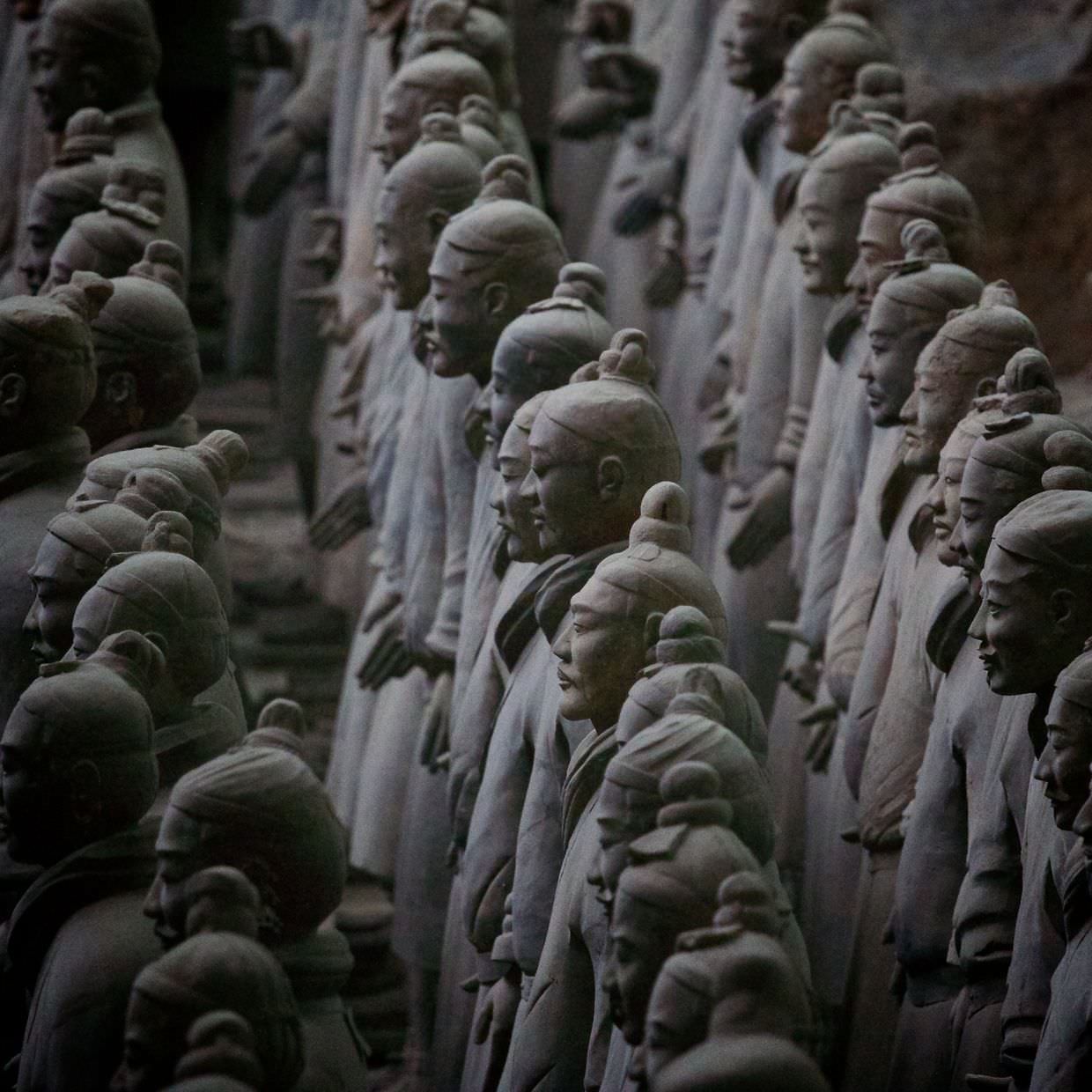
Returning to our scheduled itinerary, a driver picked us up from our hotel at 8:45am to take us to one of the world’s most famous archaeological sites; the Terracotta army (兵馬俑, bīngmǎ yǒng). The warriors, which belonged to the first emperor Qin Shi Huang in 210BC, weren’t discovered until 1974, some villagers were building a well and found an underground chamber. Today the excavation is still in progress. In 2007 we’d seen the British Museum’s “The First Emperor” showcase and it left us eager for the real thing. We were travelling with our dutch friends Jan and Emmie again, and from town the minibus took about an hour. The roads were lined with pomegranate trees; their fruit bagged on the tree and ready to pick.
The rain kept pouring, and it didn’t stop all day. Luckily the exhibits are all indoors, in three famous pits; 1–3. There is however a 20 minute walk from the ticket office through what would normally be a tranquil park — the idyllic stroll was replaced with a sopping march. Every guide book you read tells you to start with the smallest pit first and work up, pit 3 is the smallest, pit 1 the largest — as big as an airport hanger.
Pit 3 is just a taster, it has only 72 warriors, although they are all high ranking officials. Disappointingly the information on the warriors throughout the exhibit is scarce, there were very few descriptions (in Chinese or English), and those that we did find lacked depth — often focusing on the pits themselves, their discovery and size, rather than their findings. Instead the buildings have horrible touristy photo rooms for picturing yourself against a cardboard backdrop, and overpriced shops selling jade sculptures and figures of Chairman Mao. A concrete path surrounds each pit, and the warriors are buried some 15ft beneath ground level. Binoculars and a zoom lens help to see them properly.
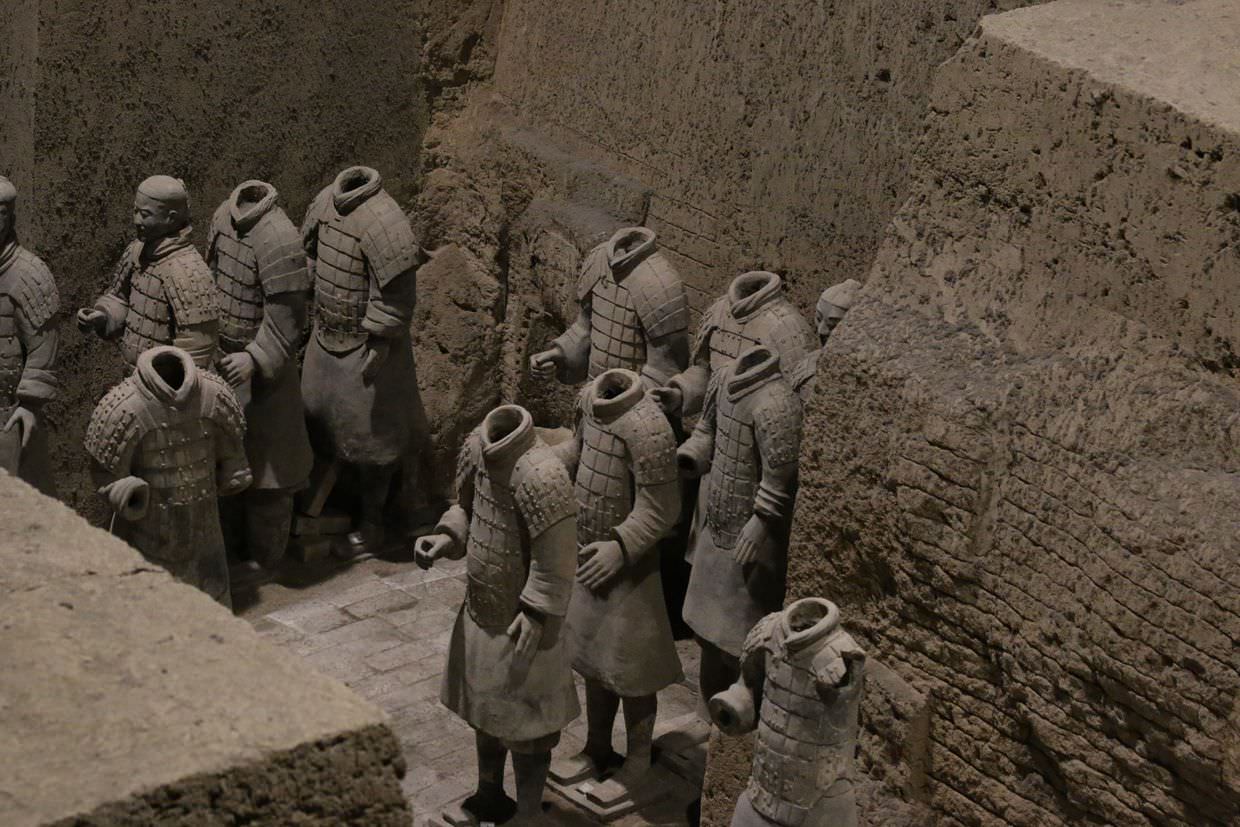
Pit 2 is vast, and contains over 1300 warriors. Most of these are yet to be uncovered, still standing dormant, enclosed beneath rolling wave-like arches which form an ancient rooftop. Most of the warriors are a distance away, but there are 5 exhibits showing the different types of warrior up close; a kneeling archer, a one of a kind standing archer, a cavalryman with his horse, an officer and a general (of which there are very few). The detail is astonishing — the facial expression, the hair style, the patterns on the soles of their feet.
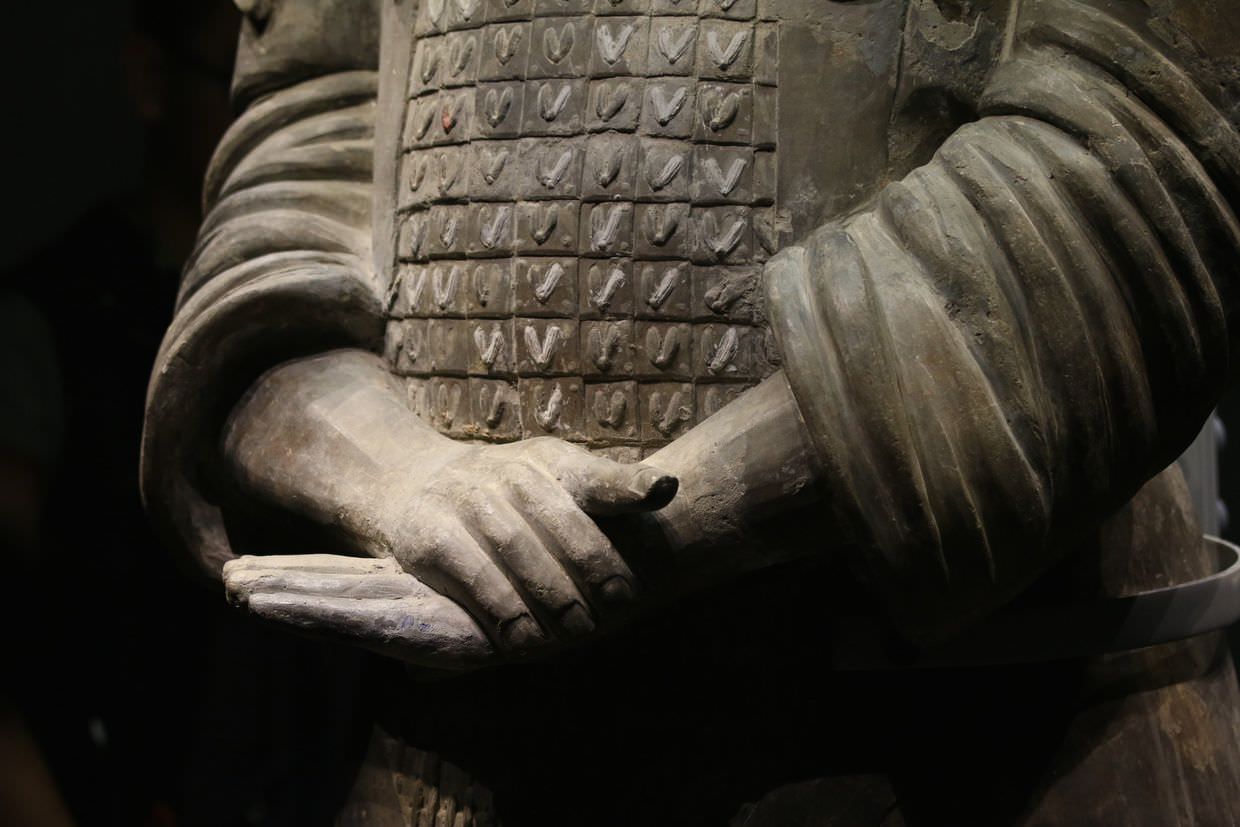
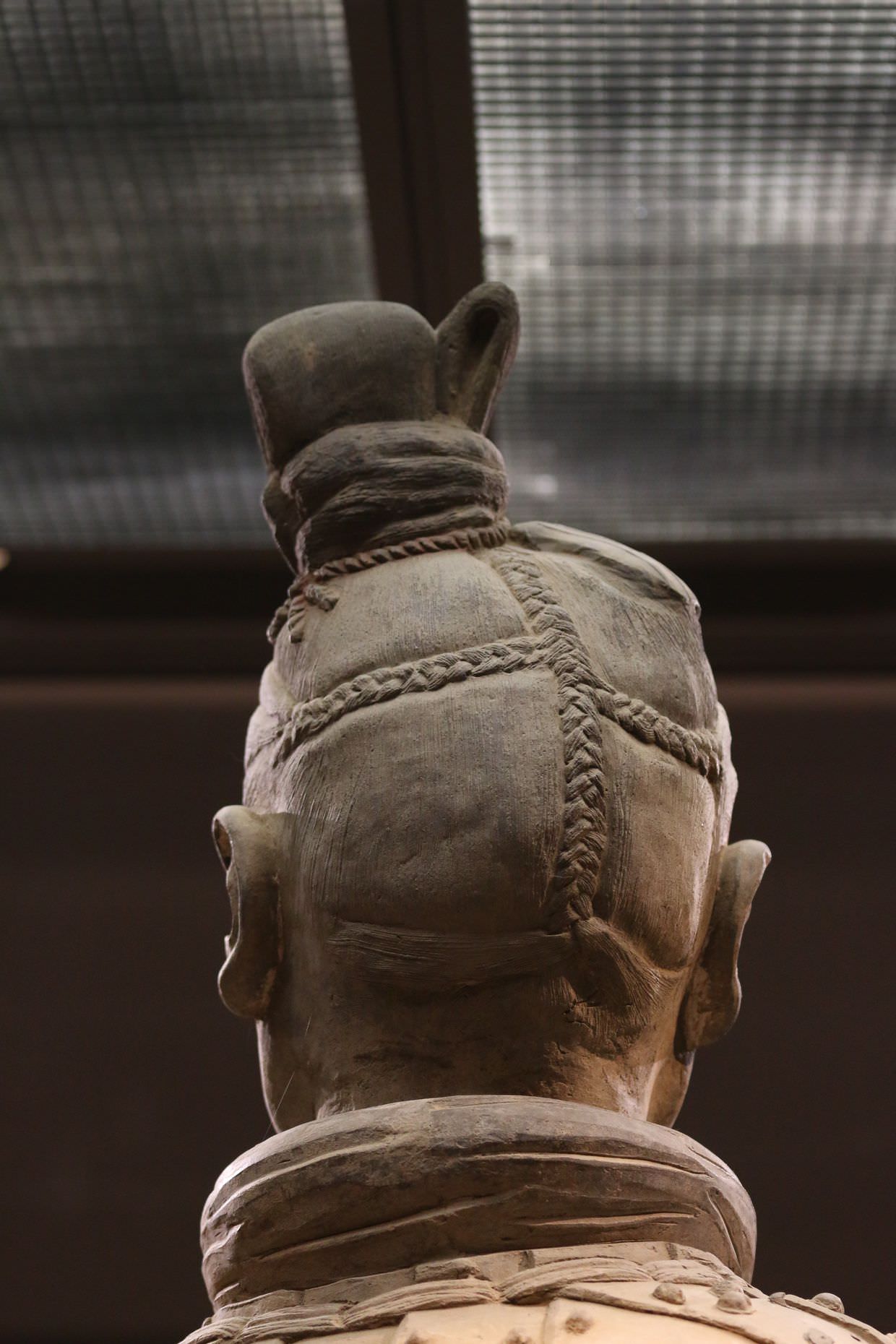
Pit 1 is the main attraction, a circular route around an excavation that houses over 6000 warriors, the best vantage point is the crowded entrance. Here three lines of perfectly restored warriors stand ready for battle, behind them troops and horses line 11 wide corridors which disappear into the distance. Realistically the further back you look the less impressive the pit becomes, only because the warriors still lie in pieces and the effort to put them back together is gargantuan. At the back and sides of pit 1 we saw some of the stages to this; gathering parts, identifying them, connecting the dots, painstaking reassembly. The three lines of warriors at the very front are the most impressive part of the whole site, lined up together you can see that each is an individual; a different face, a hairstyle, an expression; but also their height and build. So lifelike is their appearance it’s easy to imagine them fighting battles in the afterlife; in reality they get to watch the never-ending camera battle of their modern descendants.
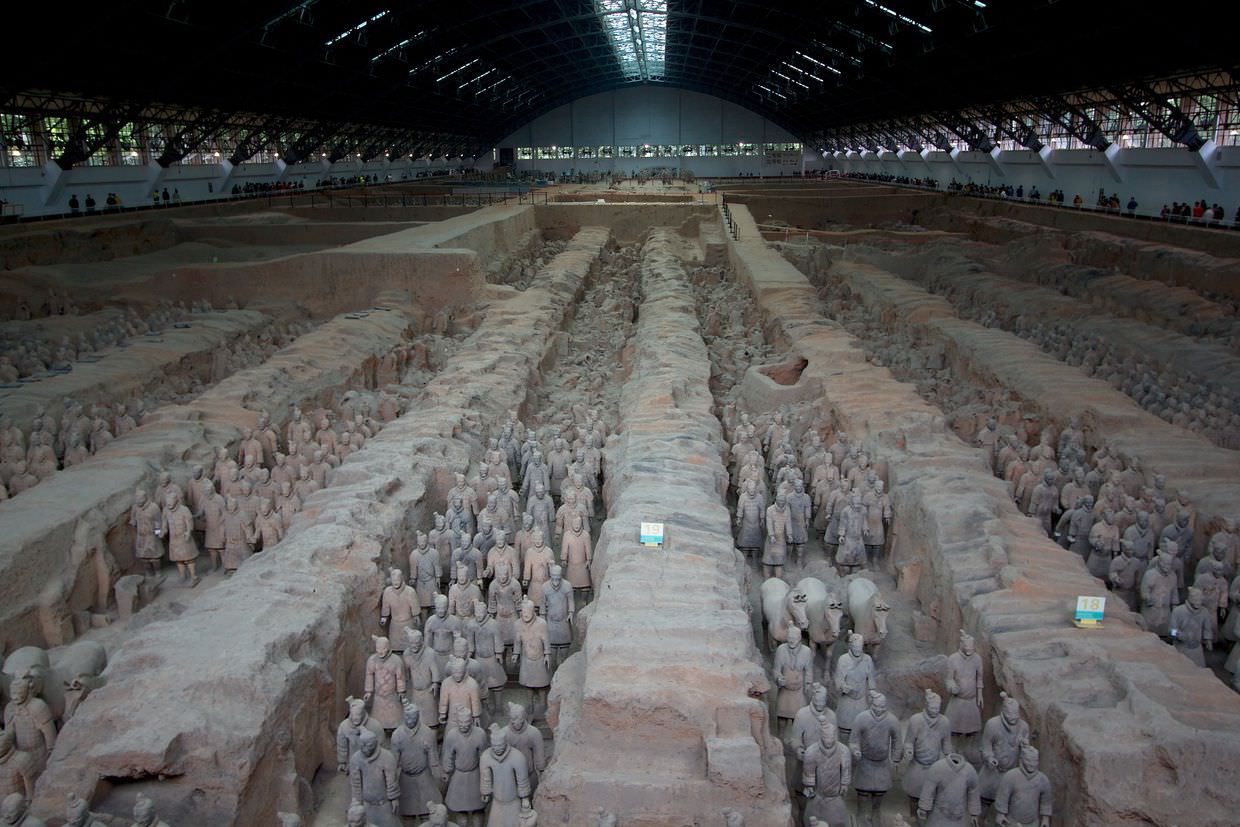
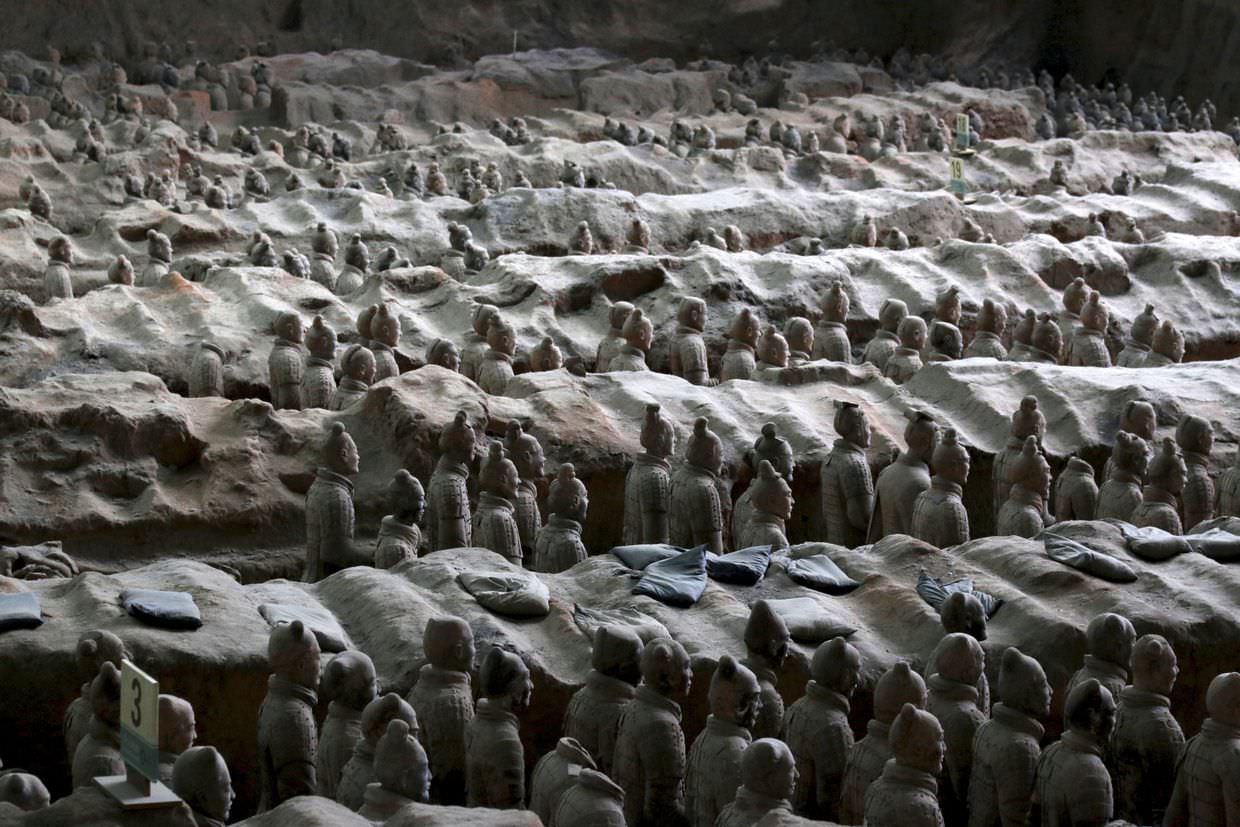
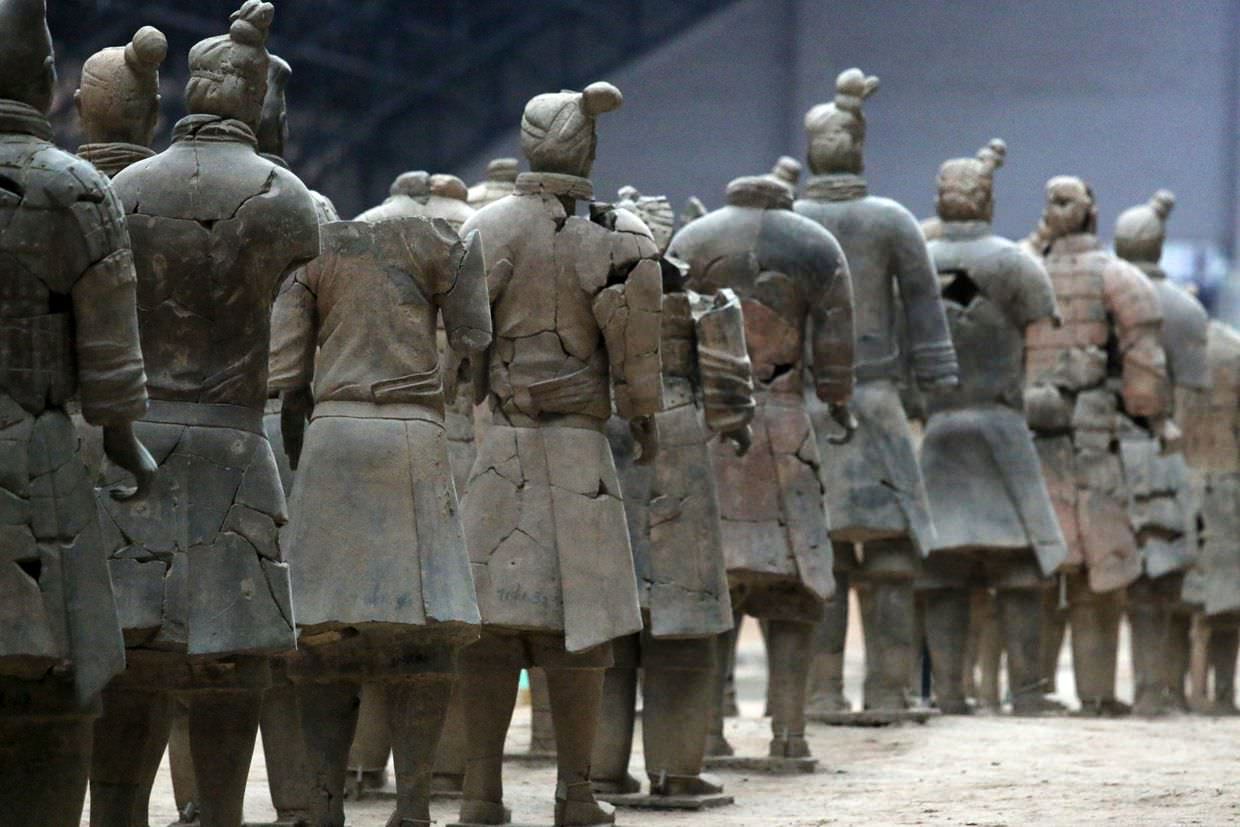
There’s a small museum on site, the highlight of which is a bronze horse and chariot from the site of the emperor’s tomb, but we left quickly, the room dark and filled with phone wielding tourist groups. We also nipped around an out of place exhibition showing Italian antiquities.
The final attraction of the visit is outside the main grounds; the exit takes you out through the gift shop. Or more precisely, via the hundreds of stalls selling thousands of replicas of terracotta warriors, the long way back to the car park. From one-inch to life size, there must be more figurines here than in the pits. Of course we did want one, and we bartered from 180RMB down to 30RMB (£3). Farmers were also selling piles of fresh pomegranates.
This was the last activity we’d share with Jan and Emmie, and from the minibus we said our goodbyes and exchanged emails — we’d be going to Jiuzhaigou, they were going to Tiger Leaping Gorge. Purely by chance, we did bump into each other again in Guilin.
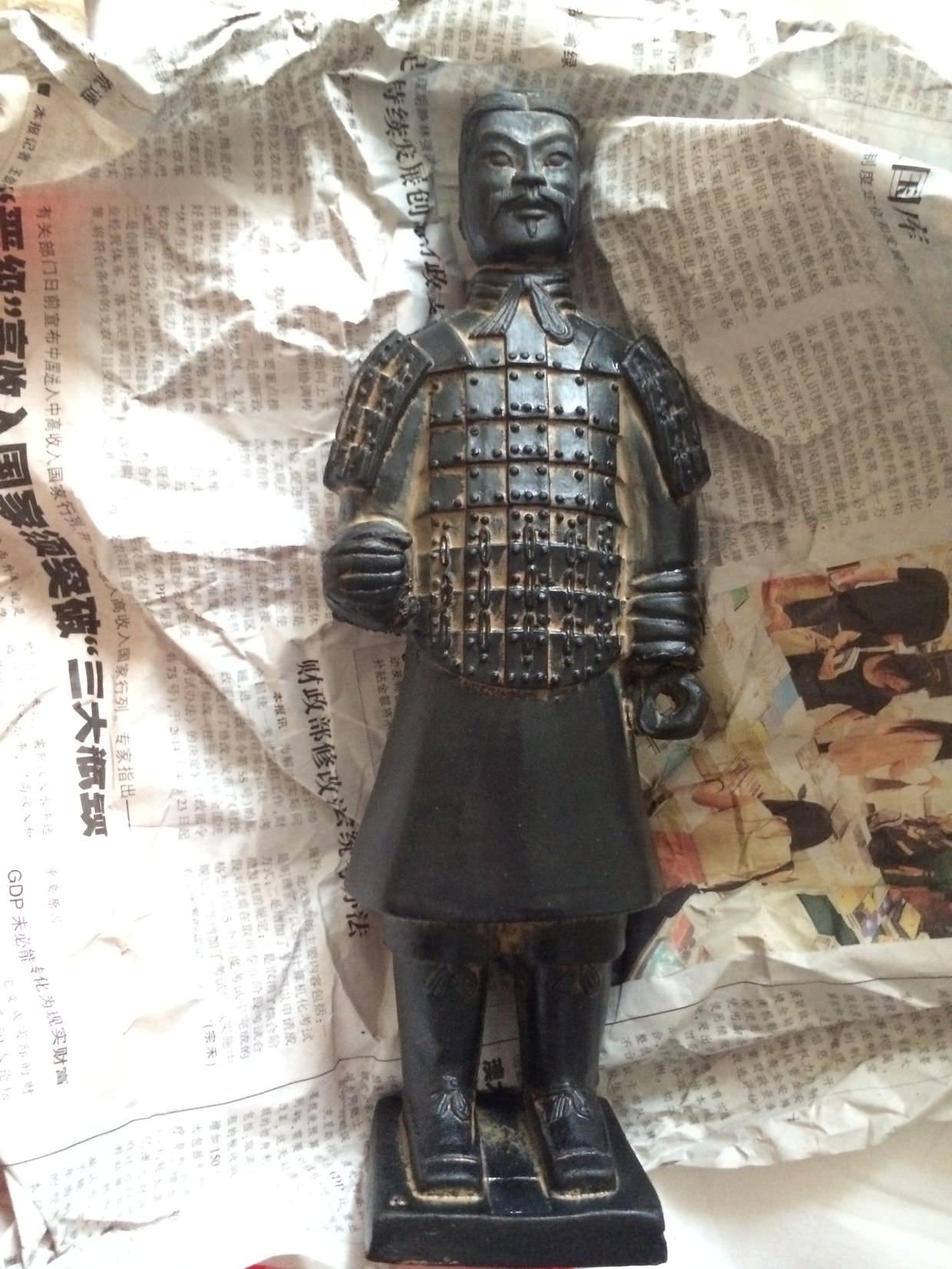
Xi’an’s drum and bell towers
Missing out on the drum and bell towers in Beijing, trying to see them yesterday just as they were closing; so far we hadn’t much luck with drums and bells. From the terracotta warriors we headed straight back out into Xi’an and its rain, to see these traditional towers.
The bell tower was closest, stranded on a roundabout, our hotel just over the road. Built in 1384, then rebuilt in the 1700s, the tower has three floors, red circular pillars and ornately painted ceiling beams. Outside sits the jingyun bell, cast in 711, weighing over 6 tons.
We arrived in time to catch a traditional musical performance with bells and some old Chinese stringed instruments.
Just down the road is the drum tower, where traditionally a drum was beat to mark sunset. Larger and more impressive than the bell tower, the building is surrounded by antique drums over 2m in diameter — inside there’s a drum museum. Once again we got lucky and arrived at the beginning of a drum-beating performance. Energetic and almost tribal, it was fascinating and wholly different to the bells. From the gift shop we bought a traditional Chinese painting.

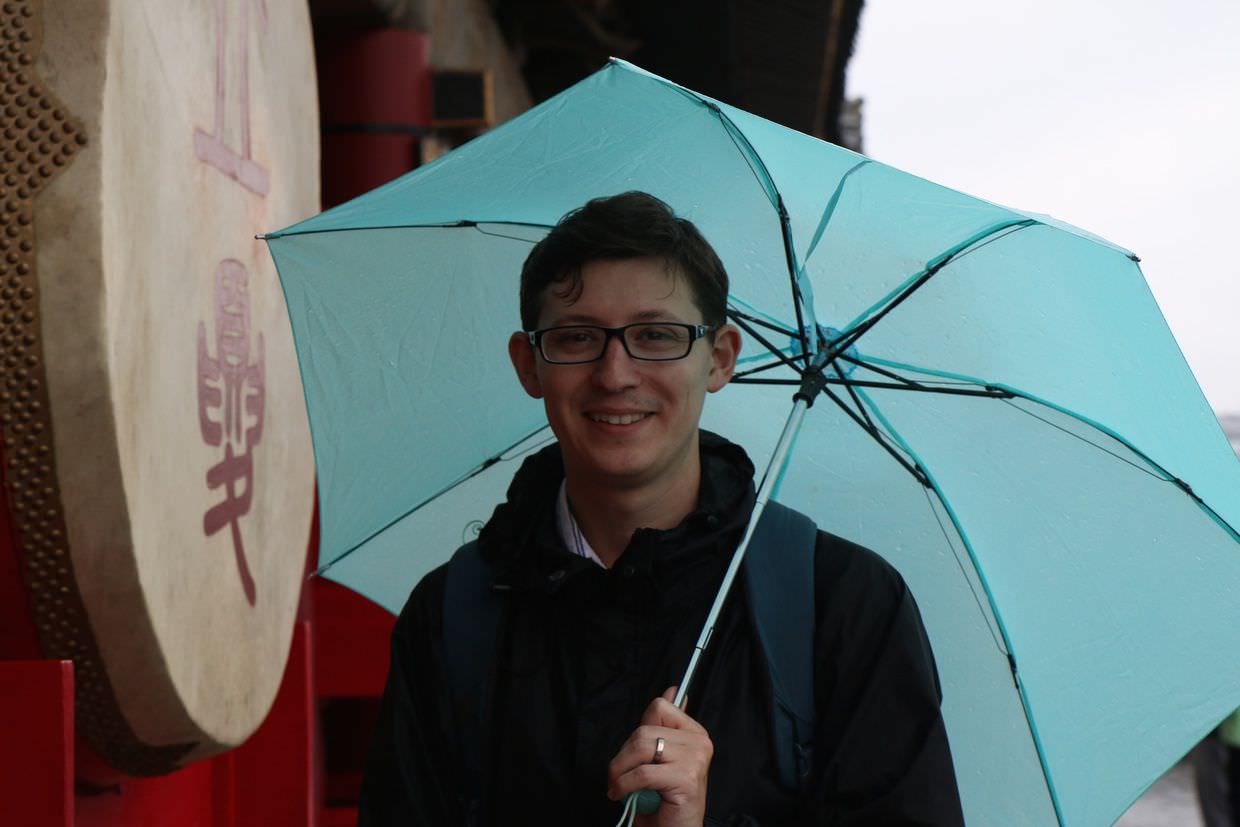
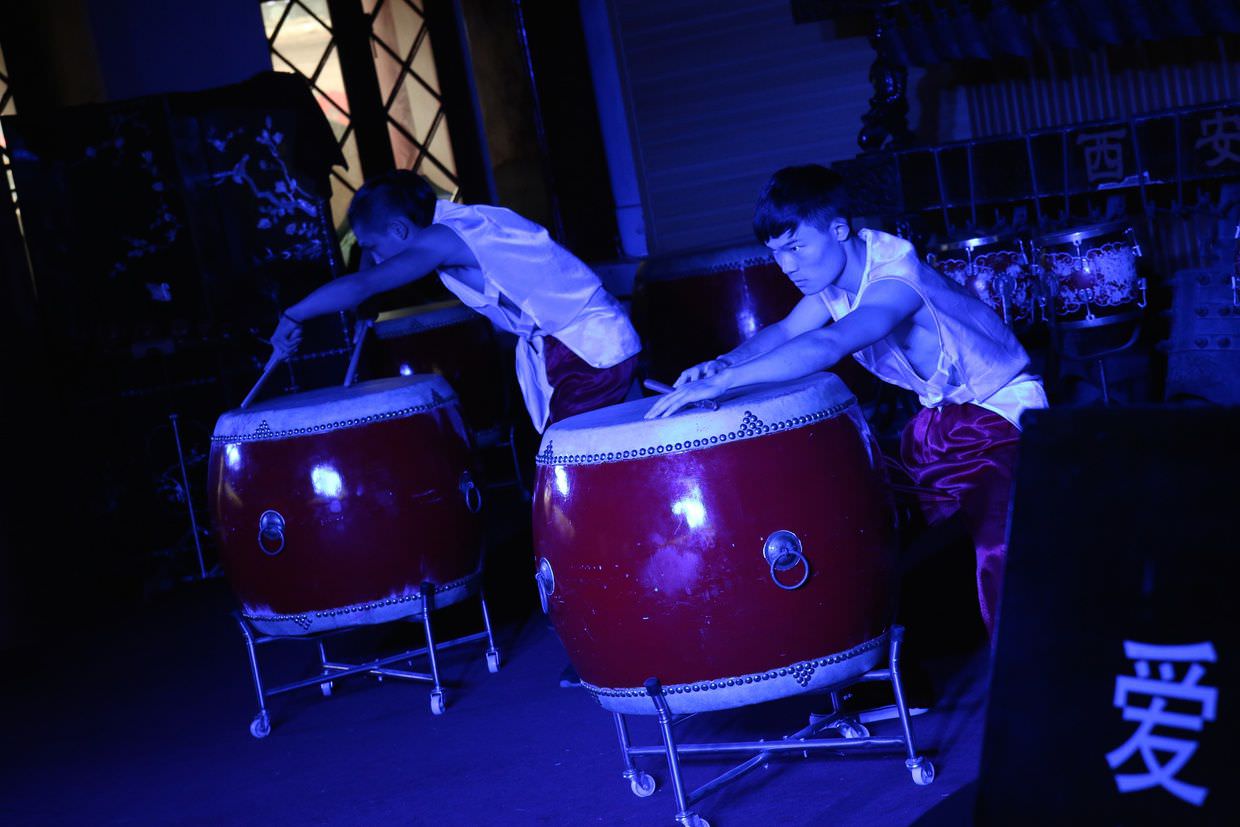
Street food
Conveniently the drum tower exits into the muslim quarter, and once again we perused the streets looking for tasty food. We ate more Chinese hamburgers, rose flavoured rice desserts — to Sam’s ongoing rose misfortune and disgust, fried potatoes, spiced mushroom and freshly squeezed pomegranate juice. The latter came from the cutest and friendliest pomegranate juice bar, where we watched the hand-powered mechanical juicer do its thing. Pomegranate juice in the UK is imported, preserved and quite bitter; this freshly picked and juiced drink was something altogether more delicious.
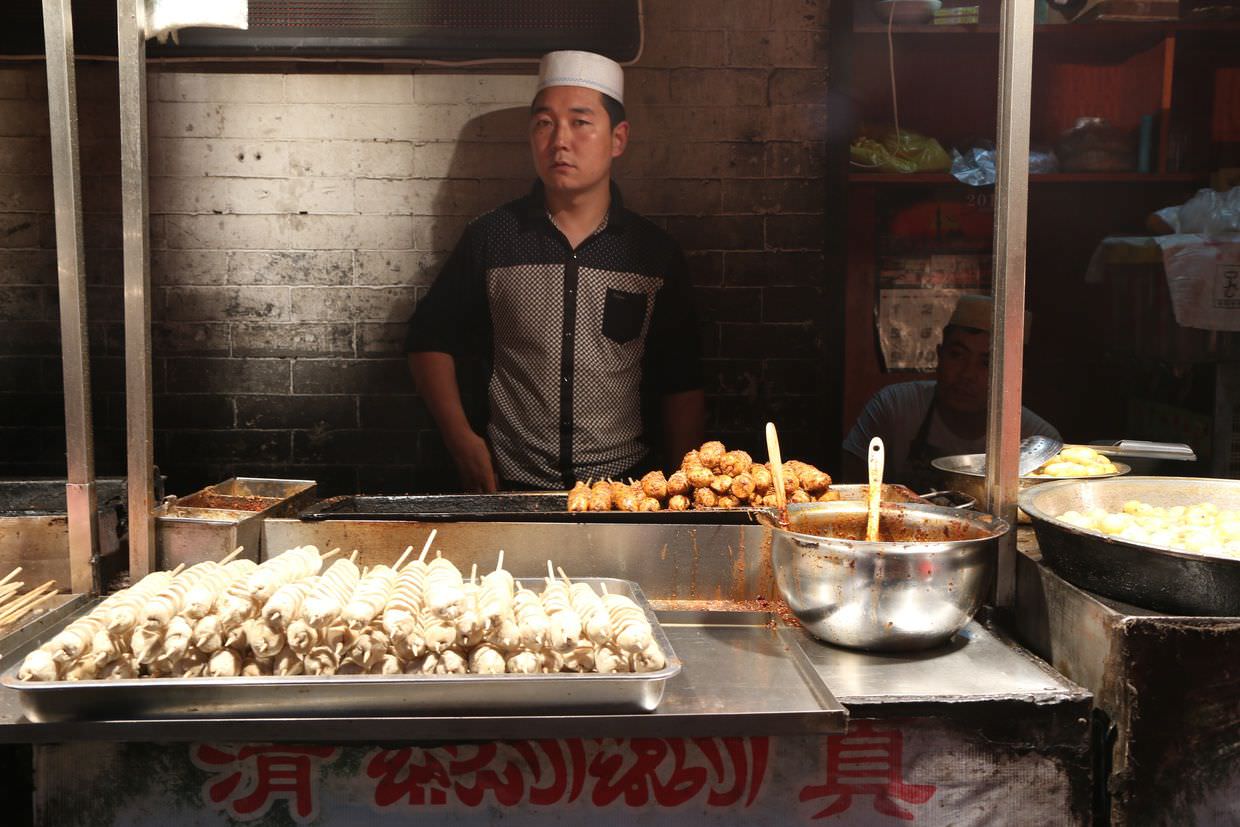
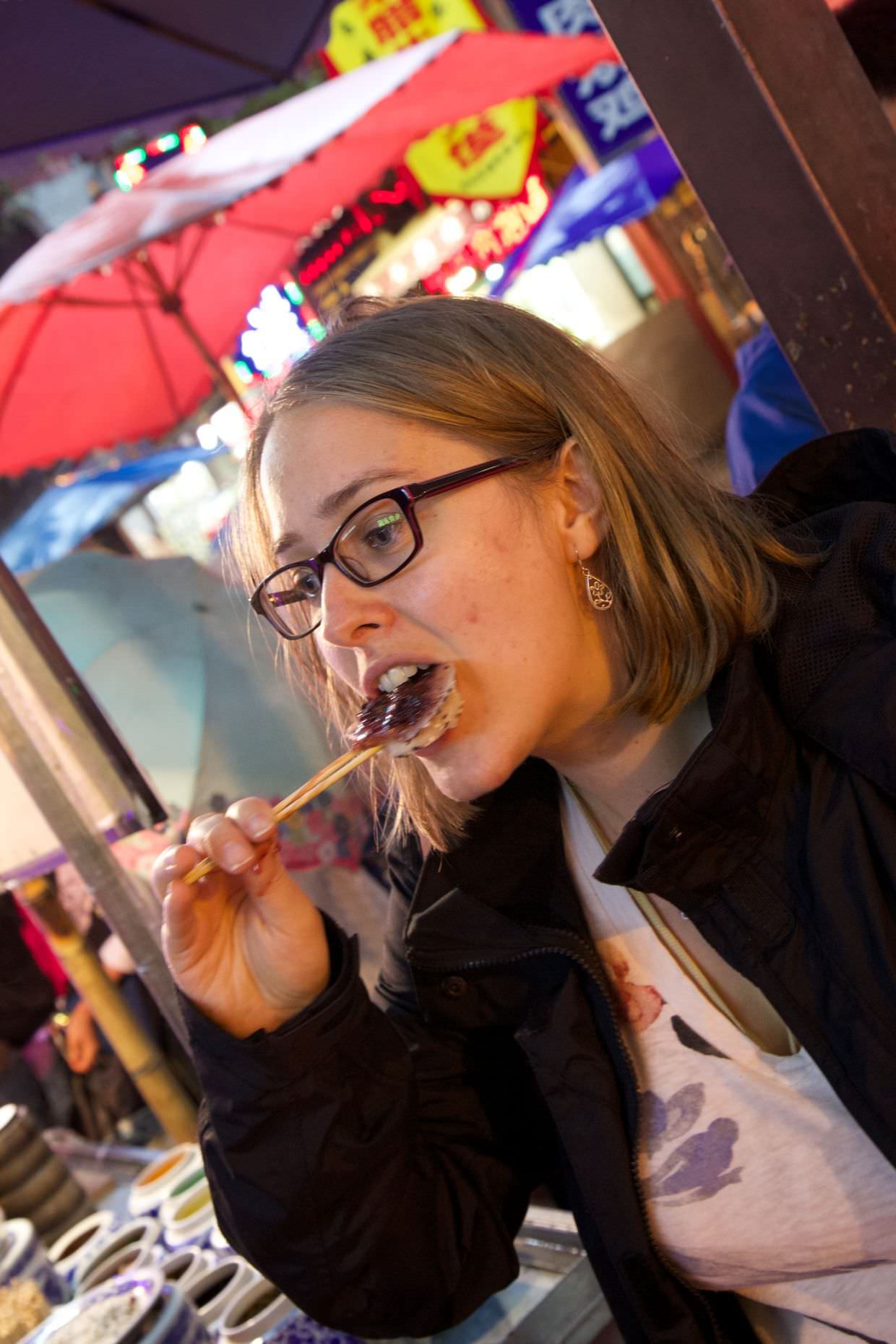
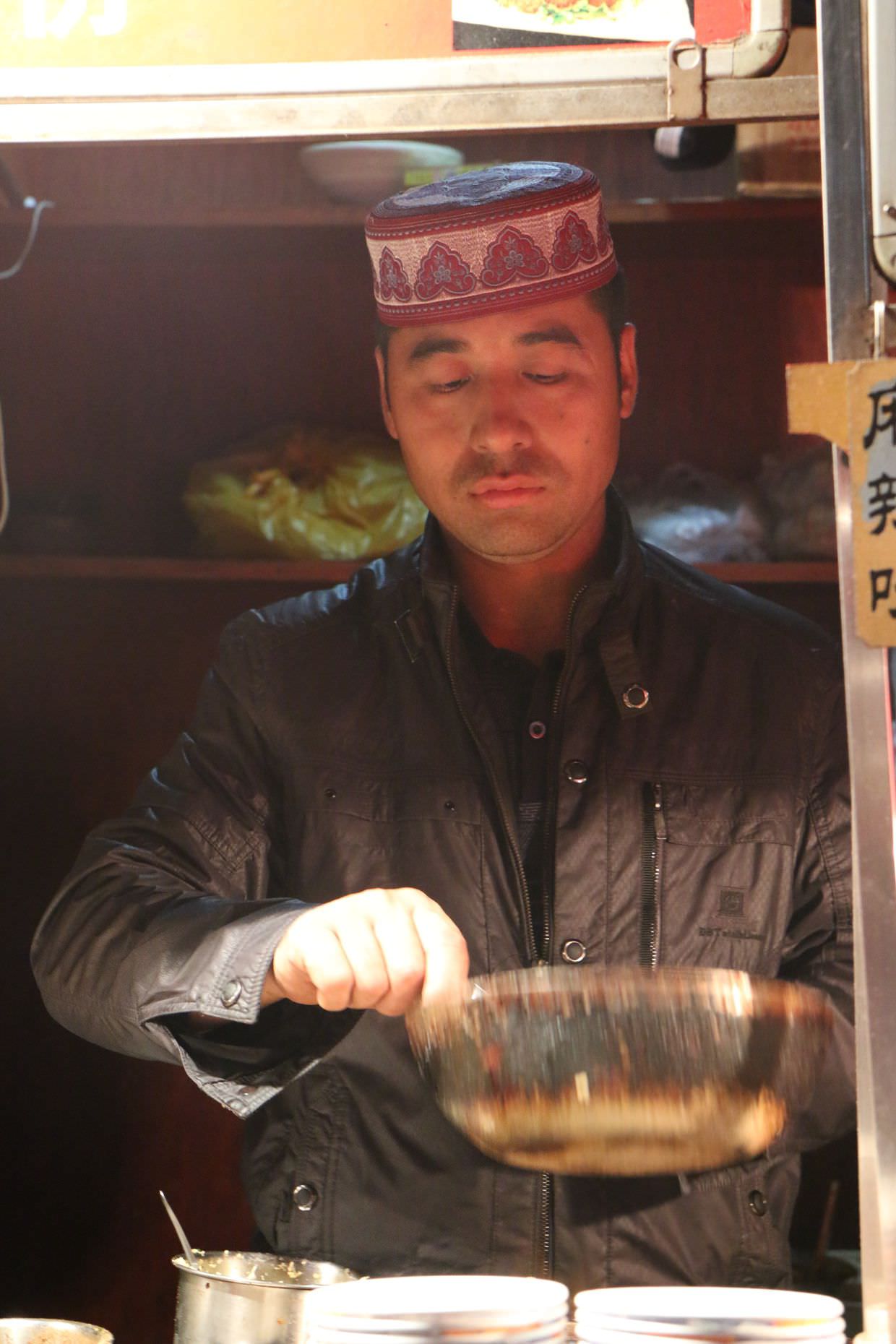
Goodbye Xi’an
Our sopping wet stay in Shaanxi was now at an end. In the morning we checked out and boarded our first internal flight from Xi’an to Songpan and Jiuzhaigou. All the traditional Chinese sightseeing of the holiday was over; the wall, the forbidden city, the terracotta army (maybe with the exception of Pandas in Chengdu); we’d experienced China’s frenetic cities and now we were heading to the countryside — for dramatic landscapes and a tiny bit of relaxation.